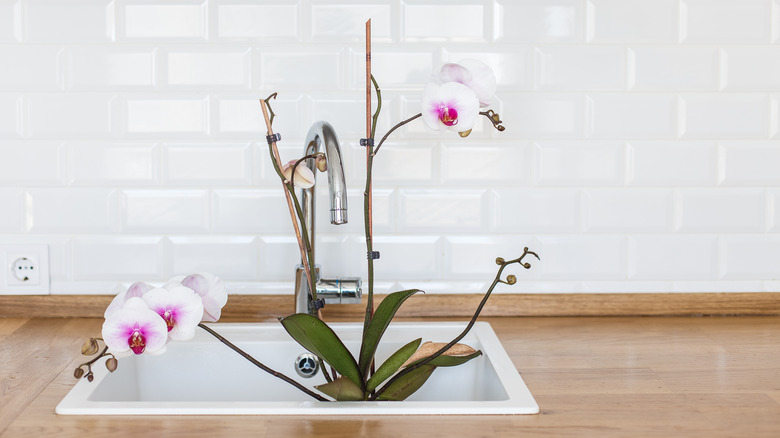Grocery store flowers are tempting. Stores like Trader Joe’s and Aldi are known to carry budget-friendly flowers and plants that are perfect for sprucing up the home. Picking up an attractive plant is easy, but keeping it alive can be challenging. Flowers like orchids are stunning but fickle and need specific care. They’re prone to water damage if overwatered and need full sun to thrive, even after blooming. Drip irrigation systems like SkyPots are a great way to store plants but are not a good solution for an orchid that has bloomed.
Hanging gardens are a space-saving option for indoor and outdoor plants. This attractive way of hanging plants makes top-down watering a breeze. Drip irrigation may be a fitting solution for many plant species, but orchids are as delicate as they are beautiful. They’re prone to water damage yet need to be hydrated regularly. Therefore, SkyPots are not ideal for storing your orchid during the dormant season.
Orchids are too delicate for drip irrigation
View this post on Instagram
Successfully caring for an orchid is rewarding. However, losing an orchid due to overwatering is the opposite; it feels like a failure, no matter how many plants you’ve grown. That is why drip irrigation is not a suitable watering solution for your orchids. Drip-down watering consists of one water source that trickles down from plant to plant. In this setup, plants are arranged vertically so excess water does not stay in the soil but drains into the pot below. It’s an ingenious way to conserve water and save space, but it’s not an effective way to store or water your orchid.
Orchids need regular watering, but they cannot be consistently wet. They will become susceptible to fungi and diseases like root rot. After their roots and soil are adequately hydrated, they must be left to dry. No matter how minuscule, a continuous trickle of water will keep the soil moist and prevent it from drying out. While you can certainly hang an orchid, you’ll need to bring it down when you’re ready to water it.
Give orchids a weekly bath instead

Orchids are showy centerpiece flowers that need more care than the average house plant. They are both prone to overwatering and underwatering. Even those born with a green thumb consider orchids dramatic due to their particular care instructions. If you bought a grocery store orchid, you’ll also discover a thin line between hydrated and water-logged. Keeping a strict watering schedule is the best way to nurture your plant.
For the best results, you should thoroughly water your orchid in the sink once a week. First, remove the plant from its decorative pot, but keep it in the plastic grow pot. Then, place the orchid in the sink. Water it completely with lukewarm water so the soil and roots are well-moistened. After you’ve watered the plant, leave it in the sink to drain. Once it has drained all excess water, you can return your orchid to its original pot.